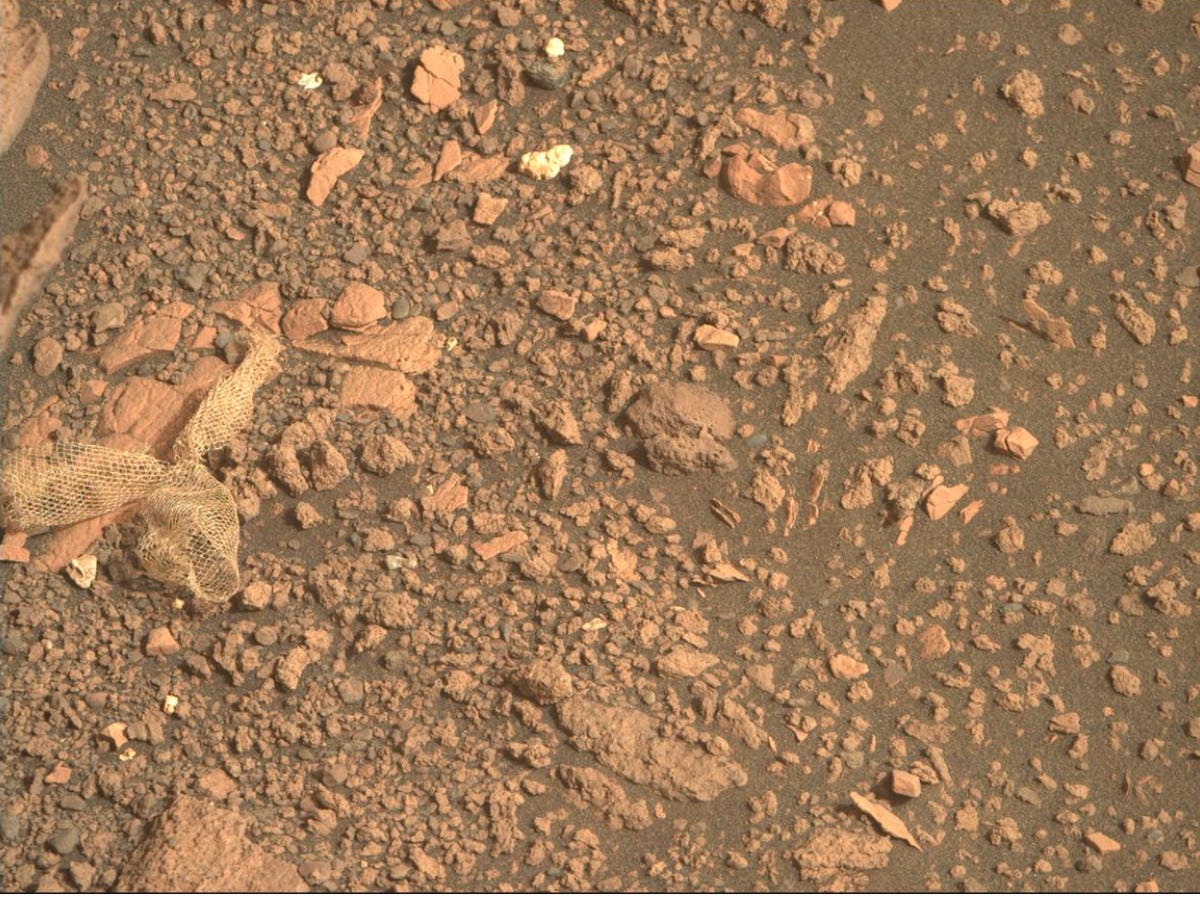Image taken by the Ingenuity helicopter of the crash site (parachute and rear shell) on Mars. Image: NASA/JPL-Caltech.
NASA’s Mars rover Perserverance and its Ingenuity helicopter search the Red Planet for signs of ancient life. But what they most often encounter is debris from their own landing.
Detailed color images taken by Ingenuity’s helicopter show a parachute and aft hull located 1 km from the Perseverance landing site. These parts are part of the entry, descent, and landing (EDL) hardware that was washed up on the planet’s surface when Perseverance touched down on Mars on February 18, 2021. A NASA blog post shows that the discovery of the debris does not stop there. After the parachute and back shell were identified, other smaller pieces of EDL hardware were spotted on the planet.
On April 16, 2022, NASA spotted unusually bright material in an image from the Mastcam-Z camera. This “shiny material” has not been identified. She was unidentifiable until the Perseverance rover entered the Hogwallow Flats area, nearly 2 km from the crash, and returned a high-resolution 360-degree Mastcam-Z panorama.
Thermal blankets on Mars
It was then that the EDL team was able to identify the shiny material as Multi-Layer Insulator (MLI), likely belonging to the overhead crane. The material matched the pattern of the thermal blankets used on the spacecraft, which are made of perforated aluminized Kapton (PAK) or Mylar, likely what appeared as the shiny material in the images.
As more images of the Hogwallow Flats area were produced, more EDL debris was discovered, such as a piece of Dacron netting, commonly used in thermal blankets.

The Mastcam-Z image shows the Dracon material found on Mars. Image: NASA/JPL-Caltech/ASU.
Although the mystery of the nature of these objects seems to have been solved, the question of how they were able to get so far from the crash remains unanswered. According to NASA, this could be due to the energy of the crash that ejected the materials into the air, the small pieces that were thrown out of the crash ballistically, or simply the wind that blew the pieces away.
Watch out for debris for future missions
For the moment, the debris does not cause any concern. However, the team will continue to save items as they are found. EDL debris is common in these expeditions, as it was also found at the site of the Curiosity rover.
Other than the fact that they’re not very tidy, what does that mean for Perseverance and future missions?
NASA explains that with improved camera technology, future missions will be able to more easily identify this type of debris. “Engineers designing EDL hardware for future missions will need to consider the impact (literally) of their design on Mars and on mission requirements,” the space agency said.
“In the meantime, as Perseverance continues to collect samples for possible return to Earth, Perseverance imaging teams will continue to review images from the terrain for possible sources of EDL debris. Sampling teams will also continue to monitor potential sources of contamination to ensure the integrity of the returned sample cache. »
Source: ZDNet.com
